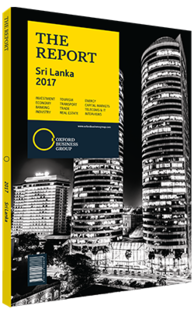Susantha Ratnayake, Chairman, John Keells: Interview

Interview: Susantha Ratnayake
What is the pace of development in the middle and upper segments of the residential property market, and does this need to be adjusted?
SUSANTHA RATNAYAKE: The residential development market has seen tremendous growth over the last few years. The demand for housing is approximately 100,000 units per year, while the demand for condominium developments in the upper and mid-market in Colombo and the Greater Colombo region is around 1500 units per year. An estimated 40% of the condominium developments will serve the upper market while around 60% are aimed at the middle tier. We estimate that in the short to medium term, demand for upperand mid-market apartments will far exceed known current and future supply.
The mid-tier market is mainly owner-occupied, as people are moving into the city and looking for affordable housing. Rising property costs, supply of domestic help and overall convenience have led to this shift from housing to apartments. The luxury market, concentrated in the central business district of Colombo, has also seen growth. This market has more investor-driven demand rather than owner-occupied demand.
A segment which needs to be identified and focused on is the lower end of the market. Developments in this segment may need subsidies and other assistance. The government has been encouraging development at this level by working to resolve the housing needs faced by the middle- to lower-class citizens of the country. The government also believes that such developments will free up land for more productive alternatives. A catalyst for this is the Western Region Megapolis Planning Project, which will involve zonal development.
What mechanisms could be used to encourage the private sector to build mid-level properties?
RATNAYAKE: In most urban areas private developers face difficulties in assembling sizeable land parcels suitable for residential developments due to the scarcity of freehold lands. Such scarcity has resulted in high land prices and this has, in turn, driven the private developers to focus on high-end condominiums/ housing, where they can get better profit margins to justify the high land prices that they pay. These developments primarily serve the high- or upper-middle-income groups, leaving the mid- to low-income groups underserviced. Therefore, as the largest landowner in the country, the state should release suitable land to the private sector at affordable prices for the lower-middle-income-level customers.
Further, the loan schemes available for buyers seeking property in the high- and upper-middle-income segments are not affordable. This market comprises mainly first-home buyers and young professionals or retirees. In most cases professionals in the early stages of their careers cannot purchase a property based entirely on their earning capacity. Additionally, the loan schemes provided by banks seek collateral, which this segment of the market finds difficult to provide. The government should encourage public and private sector financial institutions to design loan packages catering to their aspirations and needs. Such loans for young professionals must consider the future earning potential of the client.
How are volatile commodity prices affecting raw material supplies for the industry?
RATNAYAKE: The ongoing and planned construction projects initiated by the state and the private sector are impacted by limitations on the availability of key construction materials in Sri Lanka, and the resultant dependency on imports that are affected by exchange rate fluctuations. The scarcity of skilled and unskilled labour for the construction industry and the need to source construction workers from overseas is another major constraint. When sourcing labour from overseas, the developer will face increased costs in the areas of accommodation, air tickets, wages and work permits.
You have reached the limit of premium articles you can view for free.
Choose from the options below to purchase print or digital editions of our Reports. You can also purchase a website subscription giving you unlimited access to all of our Reports online for 12 months.
If you have already purchased this Report or have a website subscription, please login to continue.

